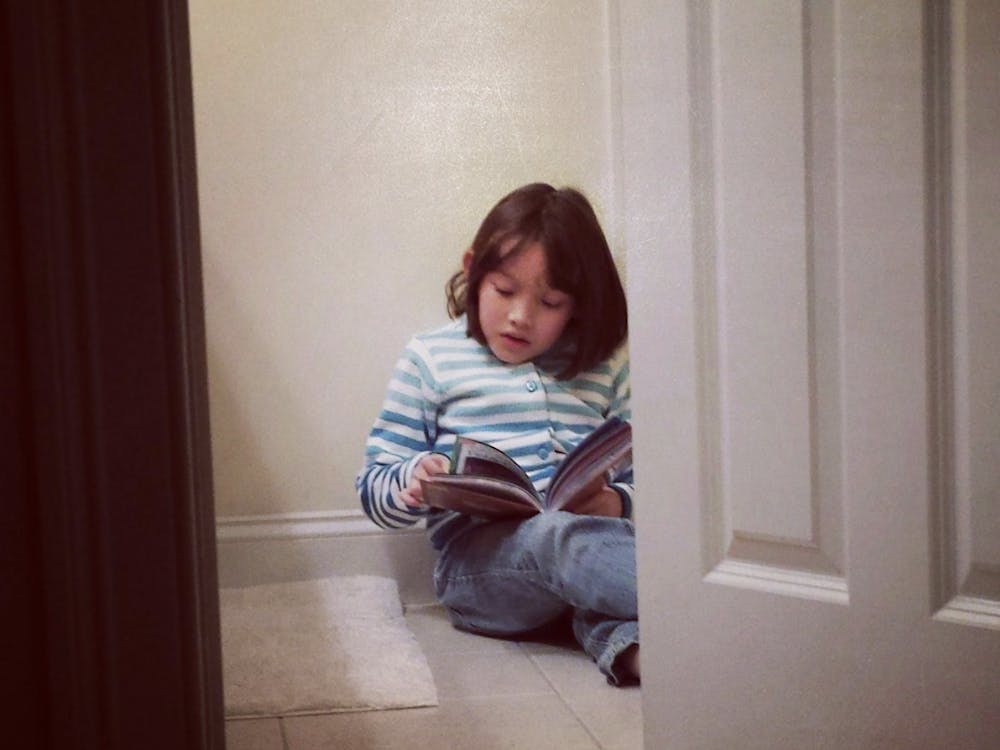Film is a unique art form in its ability to defy the boundaries of time and space while still making the world of film accessible for viewers to experience. It tricks the eye since it consists of photographs captured so quickly and in such close succession that it imitates motion. The audience is often unaware of the medium itself and is instead transported into the world of the film’s characters.
La Jetée (1962), a film directed by Chris Marker, reminds us of the art form’s basic building block: the still photograph.
La Jetée is a French science fiction film that sets still photographs to narration. The photomontage takes place in post-apocalyptic Paris after a third World War. A few survivors frequent underground tunnels where jailers perform experiments on the prisoners. These experiments involve time travel as the jailors attempt to salvage the world of the present by traveling to the past and the future to find a solution.
Though most captives are too weak for this time travel, a subject finally proves himself to be strong enough due to a vivid memory he has of his childhood. As a young child he saw a woman on a pier outside of an airport. Immediately after seeing this woman he witnessed the death of a man. This distinct memory makes the prisoner able to travel back in time. After a few journeys back in time, he and the woman from his memory begin a romantic relationship.
The experimenters also decide to try to send him into the future. Once he arrives, the people of the future give him an entity more powerful than that which had destroyed the present and thus the man is able to salvage his society.
The film, which won the Prix Jean Vigo Award for Best Short Film the year it was released, is impressive in its ability to make viewers forget they are not watching a film in its usual format. Though one’s mind must work harder to follow the plot and piece the images together, after some time has passed, the transitions between the black and white images become natural and discreet.
Suddenly, every image carries its own weight. Each photograph shown on screen encapsulates a moment and crystallizes it. It represents an experience or emotion, and the viewer is encouraged to elaborate on this image without the help of the screen.
Attention is paid to the details of the image: the framing, the lighting, the sequence of the images. These are elements of the still photograph that can be overlooked in a moving picture.
La Jetée is a short film, barely a half hour. It condenses an entire story into a short amount of time, something which would be far more difficult to do in a motion picture. It is impressive that a complex and philosophical story could be told in such little time. The film does, however, require one’s complete attention and focus to watch. It is not a particularly entertaining film in the sense that it does not force the viewer to engage with it. A lazy viewer will quickly feel detached.
Chris Marker was an influential filmmaker during the French New Wave movement of the late 1950s and 1960s. The movement included several subgroups, including the Cahiers and Rive Gauche, of which Marker was a part.
While the Cahiers movement within the French New Wave included directors that tended to be younger and more financially successful like Jean-Luc Godard and Francois Truffaut, Rive Gauche filmmakers were more interested in experimental storytelling and viewed film as an art closely related to literature.
Politically, they tended to be leftists. Other members of the Left Bank group included Alain Resnais and Agnes Varda. Though Nouvelle Vague films tend to overshadow those of the Rive Gauche, both exercise filmic modernism and capture a unique and cutting-edge way of making films.
Other notable films made by Marker include Sunless, Grin without a Cat and The Lovely Month of May.




